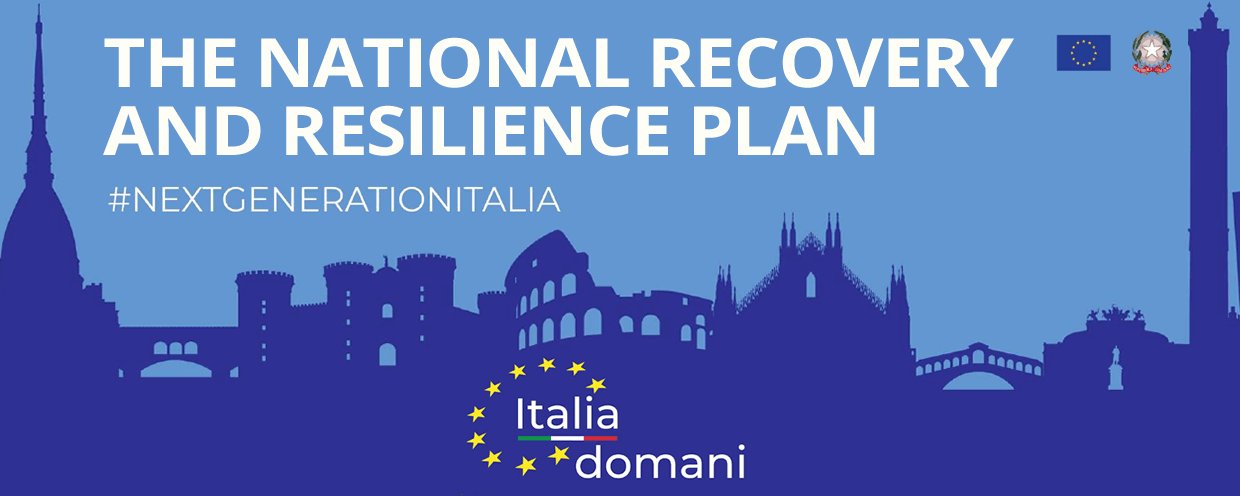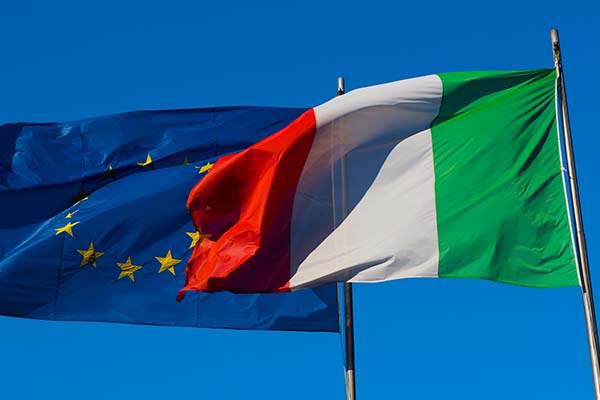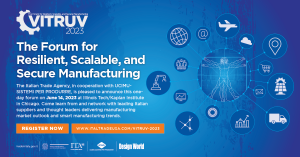THIS INTERNATIONAL ON DEMAND SUMMIT IS AN INDUSTRY… More
The Italian National Recovery And Resilience Plan
 The European Union, and its members, have launched an unprecedented action to address the difficulties and hardships resulting from the Pandemic. This action is known as the European Union Recovery Instrument (EURI) also known as Next Generation EU, and is worth €750 billion (half in the form of grants, the other half, as low interest loans).
The European Union, and its members, have launched an unprecedented action to address the difficulties and hardships resulting from the Pandemic. This action is known as the European Union Recovery Instrument (EURI) also known as Next Generation EU, and is worth €750 billion (half in the form of grants, the other half, as low interest loans). The Italian Recovery and Resilience Plan (RRP) is born under the framework of the EURI and includes all its allocation under the Recovery and Resilience Facility (RRF), that amounts to €191,5 billion, and represents 10,7% of the country’s gross domestic product (GDP) in 2019. The plan is to be completed by 2026. Further, €30.6 billion will be funded through the Complementary Fund by the Italian government.
The RRP will focus on three strategic areas that are part of the European aims:
a) digitalization and innovation;
b) ecological transition, and
c) social inclusion.
The main objective is, therefore, to repair the economic and social structure damaged by the pandemic. The plan will partially contribute to reducing Italian territorial, generational and gender gaps.
The RRP has been divided into 6 specific missions:
- Digitalization, innovation, competitiveness, culture, Aimed at promoting Italy’s digital transformation, production innovation and supporting two key sectors such as culture and tourism. Total digital connection is expected by 2026 and includes fast connection and optical lines, among other actions.
- Green Revolution and Ecological Transition, aiming to improve the sustainability and resilience of the economic system and ensuring a fair and inclusive environmental transition. Recycling is one of the main actions, but also includes efficient construction and non-waste of water resources.
- Infrastructure for Sustainable Mobility. Its primary objective is the development of a modern, sustainable transport infrastructure extended to all areas of the country, including green ports, and enhancing train connections.
- Education and Research to strengthen the education system, digital and technical-scientific skills, research, and technology transfer. Includes the creation of nurseries, transforming classrooms into connected learning environments, the renovations of schools, and promotion of new PhD.
- Inclusion and Cohesion to facilitate labour market participation, through training, strengthen active labour market policies and foster social inclusion. It also includes actions such as women entrepreneurship, infrastructural investment for Special Economic Zones, and support for people in conditions of vulnerability.
- Health, designed to strengthen local prevention and health services, modernizing, and digitizing the health system and ensuring equal access to care. It includes actions such as home care for 10% of people aged 65 or more. Community homes and hospitals, new local operation centres for remote assistance, plus investment in large new pieces of equipment for diagnosis and care.
The RRP comprises a programme of reforms to allow for better implementation of the Plan, as well as to foster the country’s modernizing, facilitating the development of business activities.
Some of the reforms considered are:
- Public administration reforms
- A justice reform to reduce the length of legal proceedings
- Simplification measures horizontal to the Plan, (permits and authorizations and public procurement, to ensure the implementation and maximum impact of investments)
- Reforms to promote competition as an instrument of social cohesion and economic growth.
According to governmental calculations, RRP should have a positive impact on the national economic outlook, to reach, by 2026, a rise by 3.6% GDP higher in comparison to the baseline scenario that does not include the Plan. The governance of the Plan envisages direct responsibility of Italian Ministries and Local Governments for carrying out the investments and reforms.
The Italian government has created a website to share more information about the RRP, programme, aims and progression.

Related Articles:
Recent News
POSTED ON

























